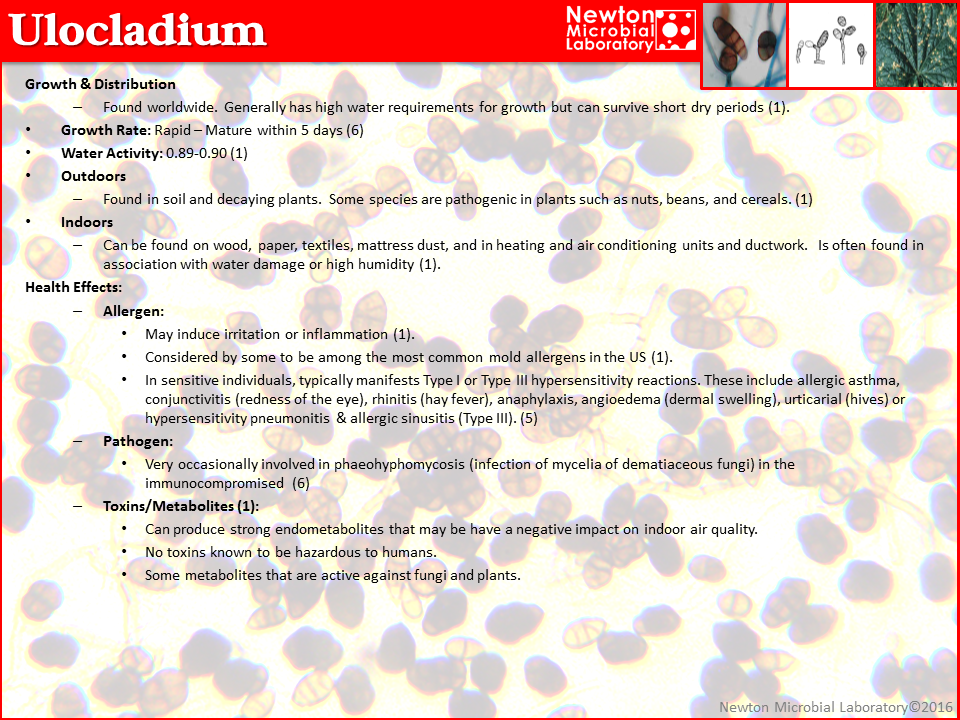Ulocladium
Growth & Distribution
Found worldwide. Generally has high water requirements for growth but can survive short dry periods (1).
Growth Rate: Rapid – Mature within 5 days (6)
Water Activity: 0.89-0.90 (1)
Outdoors
Found in soil and decaying plants. Some species are pathogenic in plants such as nuts, beans, and cereals. (1)
Indoors
Can be found on wood, paper, textiles, mattress dust, and in heating and air conditioning units and ductwork. Is often found in association with water damage or high humidity (1).
Health Effects
Allergen:
May induce irritation or inflammation (1).
Considered by some to be among the most common mold allergens in the US (1).
In sensitive individuals, typically manifests Type I or Type III hypersensitivity reactions. These include allergic asthma, conjunctivitis (redness of the eye), rhinitis (hay fever), anaphylaxis, angioedema (dermal swelling), urticarial (hives) or hypersensitivity pneumonitis & allergic sinusitis (Type III). (5)
Pathogen:
Very occasionally involved in phaeohyphomycosis (infection of mycelia of dematiaceous fungi) in the immunocompromised (6)
Toxins/Metabolites (1):
Can produce strong endometabolites that may be have a negative impact on indoor air quality.
No toxins known to be hazardous to humans.
Some metabolites that are active against fungi and plants.

